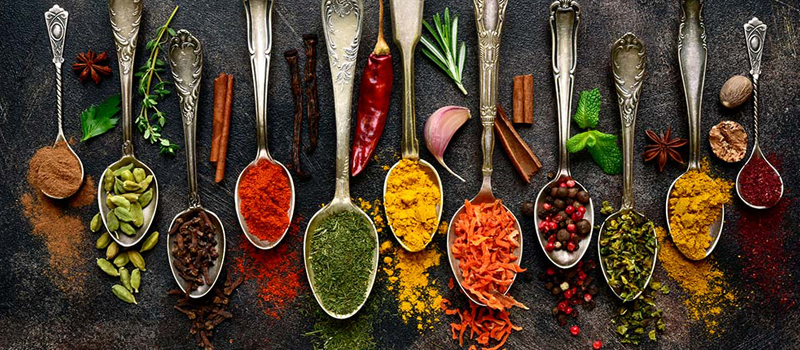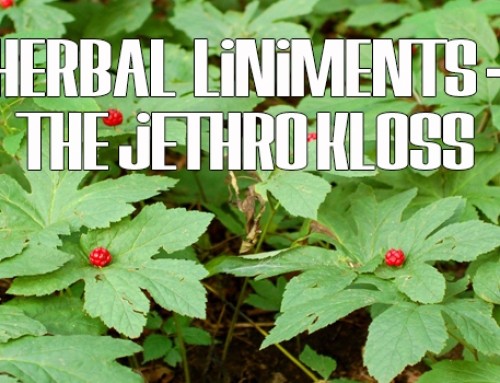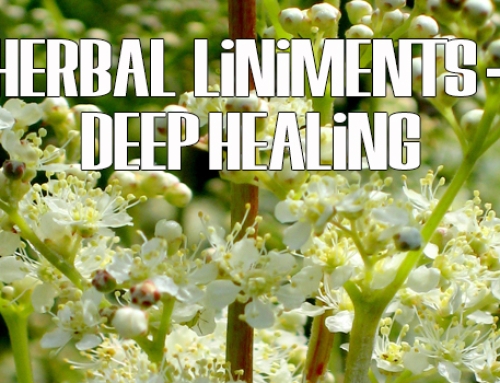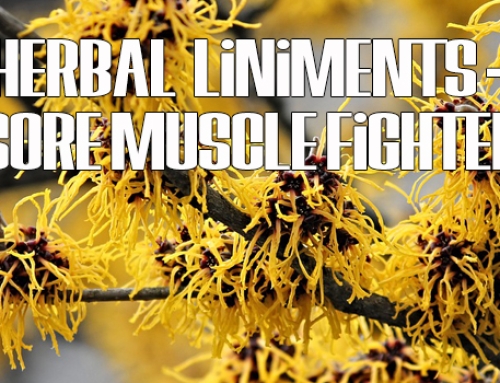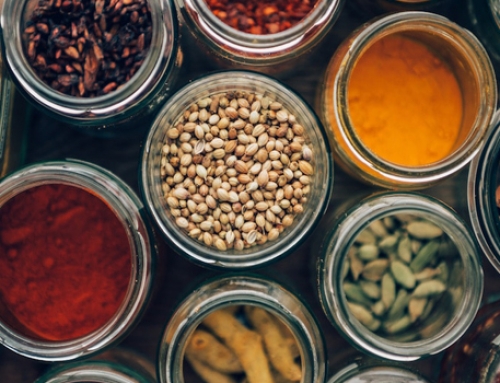As I was growing up, you were able to often find in any kitchen you walked into a spice rack or set of elementary shakers of black pepper, cumin, basil and cinnamon. Heck, I often used that cinnamon that my mom had in the cupboard for that scrumptious cinnamon toast (buttered, with a thin layer of sugar and sprinkled with that cinnamon… mmmm). But I never got the idea that any of that stuff that was in those racks and cupboards could be of any help when it comes to your own healthy home remedies.
In a perfect world, we would get all the nutrients and medication we needed from the food we ate. However, our diets and the foods available to us have changed in the past century, so that eating healthily can be a challenge. Most of us have that spice rack filled with seasonings we grab in a hurry, and splash a bit into our dinner – but what do we know about these ancient herbs and their medicinal powers?
Understanding the importance of these many and varied herbs and spices on our own physical well-being to assist us in our digestion, or keeping down our blood sugar, or promoting good heart health has escaped many people of today. Those herbs that we use often in our cooking for mere seasoning can also be utilized in keeping our systems in our bodies running like they’re supposed to.
Anyone can successfully use common herbs as they were meant to be used, to heal and regenerate the body, target certain functions of the body and give it a boost as needed. It’s just a matter of finding and reading the proper material, taking what you already have on your spice rack, and putting what you read into practice.
Before you begin to take stock of your own spice rack, and start becoming the apothecary our grandparents and great-grandparents were, let’s look at the generally used methods of ingestion of these herbs we have in our cupboards.
Brewing your own herbal teas
For us who hadn’t grown up with a lot of tea drinking in our households, and who may have some objection to the Earl Grey and Green Teas that are widely used; You can make your own teas, herbal and medicinal, that can give you the additional nutrients that your body is craving and not receiving through the food that you are eating.
And when you look more closely at any natural drink that we make, apple, orange, grape or lemonade, we are taking a portion of what was the fruit or plant and infusing it with water. We can certainly do the same with calendula, valerian root, echinacea, and chamomile.
Generally Speaking a Tea Infusion consists of: one teaspoon of dried herb or two tablespoons of fresh herb for each cup of water.
The most common method for making a tea is called an infusion.
Infusions are used for preparing the more fragile parts of the herbs like its flowers, seeds, leaves, fruits, or in a few cases roots that are high in volatile oils and compounds for consumption. And by so ingesting gain the benefits of those active nutrients, oils and compounds to help the homeostasis our body seeks after.
Put them into a pot of room temp water with the recommended doses or volumes per water ratios. Heat the water slowly allowing the infusion of the herbs properties to mix with the water. Take it off the heat just before it boils, strain the remnants of the herbs with cheese cloth into your cup and drink it while it is hot or wait for it to chill a bit and then ingest it. Add Raw Honey for sweetness if you desire to do so.
A decoction is used to break down more tenacious herb materials such as roots, bark, and nuts. To do so you bring the water to a boil, add the herbs, bring heat down to a gentle simmer and let brew for 15 to 20 minutes before turning off the heat. To get all the nutrients, oils, and compounds out of these types of herbal forms, you can soak the tenacious herb materials overnight to soften material before simmering.
Related Article of Note: Methods You Can Use to Enjoy the Herbs’ Benefits
Your medicine cabinet in your kitchen –
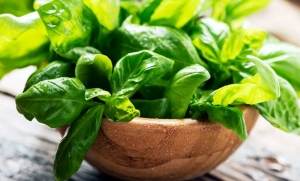 Basil (Ocimum basilicum) Everybody uses basil! Mostly in their Italian style dishes. Basil makes an excellent flavoring addition for tomato-based sauces, pestos, and dressings. Basil is best added at the last moment, as cooking quickly destroys the flavor.
Basil (Ocimum basilicum) Everybody uses basil! Mostly in their Italian style dishes. Basil makes an excellent flavoring addition for tomato-based sauces, pestos, and dressings. Basil is best added at the last moment, as cooking quickly destroys the flavor.
As a medicinal herb, basil is commonly used to treat stress-induced insomnia, tension, nervous indigestion, and even to help with the blues someone may be feeling. As part of the mint family, basil can be very cooling to the body. We recommend infusing minced basil leaves and making a tea before nighttime to help you relax and settle down for the evening. As a natural mood enhancer, adding basil to your culinary dishes just provides the additional benefit of mental well being.
Bay leaves (Laurus nobilis) Commonly used as a dry leaf addition since the flavor intensifies after drying, bay leaves are most often added in stock, stews, braises, and grain type dishes. The fragrance of the bay leaf is slightly floral, herbal, and similar in scent to oregano and thyme.
Bay leaves have a direct beneficial effect on the stomach and intestinal tract. A simple remedy would be to add extra bay leaves to your soups, stews, and stocks. You can also infuse a tea with a handful of leaves, and drink that after your meal to calm the intestinal tract.
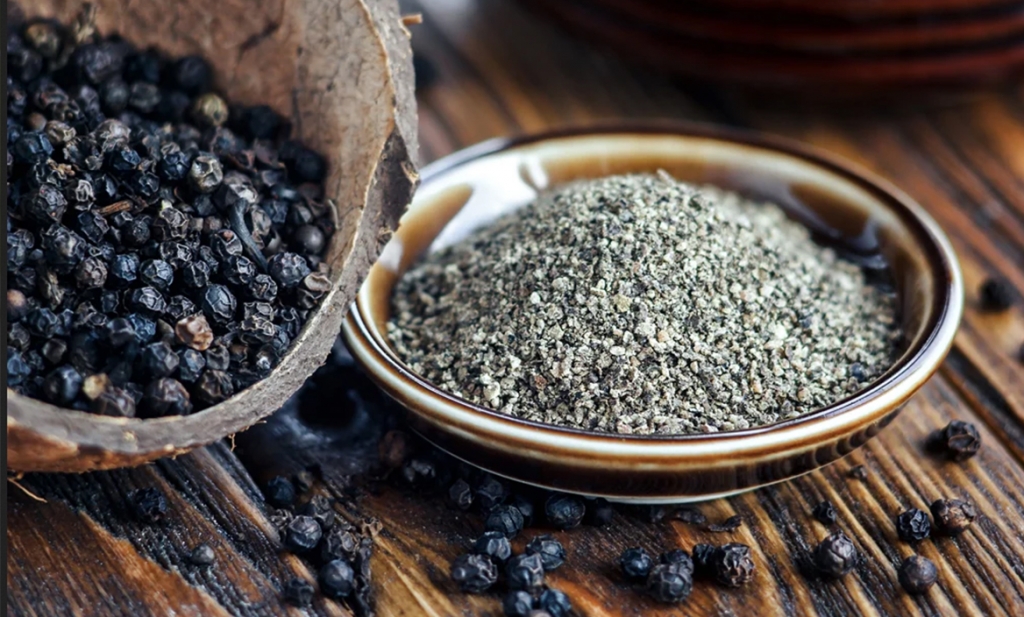 Black pepper (Piper nigrum) Dried pepper, derived from the peppercorn, is one of the most commonly used spices in European foods. Typically paired with its mate, salt, is often used as a basic spice for almost any savory dish.
Black pepper (Piper nigrum) Dried pepper, derived from the peppercorn, is one of the most commonly used spices in European foods. Typically paired with its mate, salt, is often used as a basic spice for almost any savory dish.
Held as one of the great tonics in Chinese medicine, black pepper has warming, energizing, and stimulating properties. Often used as an addition to other infusions, black pepper is valued for its ability to stimulate the senses and warm the body. Black peppercorns can be utilized via a decoction for those who have poor circulation, or colds, or for low energy levels.
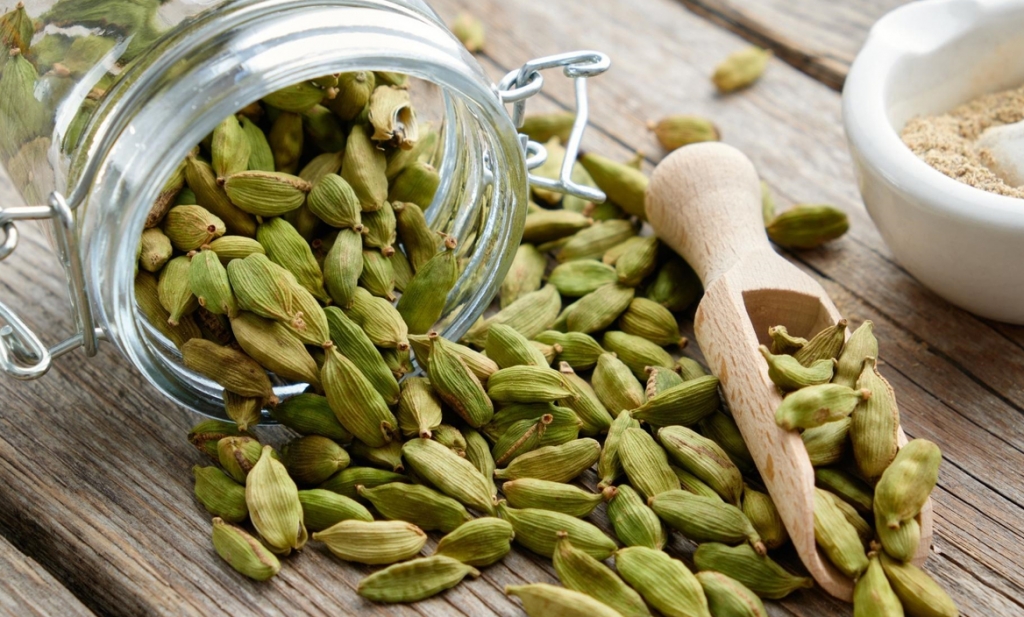 Cardamom (Elettaria cardamomum) Is often the “other” spice in eastern indian based foods. Curry is what most think of but it is cardamom that goes incredibly well with the spicing up of Indian meals with chicken, fish and rice. This delicious spice relieves gas, bloating, cramping, and improves sluggish digestion. Usually found in powder form, you can have the spice outside of a meal as well. For example, steep the seeds in hot water for a simple tea, or use the crushed seeds in honey.
Cardamom (Elettaria cardamomum) Is often the “other” spice in eastern indian based foods. Curry is what most think of but it is cardamom that goes incredibly well with the spicing up of Indian meals with chicken, fish and rice. This delicious spice relieves gas, bloating, cramping, and improves sluggish digestion. Usually found in powder form, you can have the spice outside of a meal as well. For example, steep the seeds in hot water for a simple tea, or use the crushed seeds in honey.
Cayenne (Capsicum annuum) Cayenne is the most potent, essential, and safest stimulant in your spice rack. Used often in seasoning blends for meats and pasta, it can also can be a key ingredient in your award winning chili or even in a desert cupcake or two. This spice has multi-faceted uses: As a hemostatic and astringent, cayenne powder applied topically to wounds will arrest bleeding, working rapidly to form a clot and seal off the wound. Worth taking a bit with you on your next camping trip. It can also be taken for internal bleeding as well.
Cayenne is a wonderful heart tonic, and has an amazing effect upon circulation and stimulation of the cardiovascular system. For those who feel weak and often chilled, cayenne taken internally increases circulation in the extremities. Cayenne is also helpful for a sluggish digestive system, and can be sprinkled over any kind of food to aid the body’s immune system in the event of colds and flus.
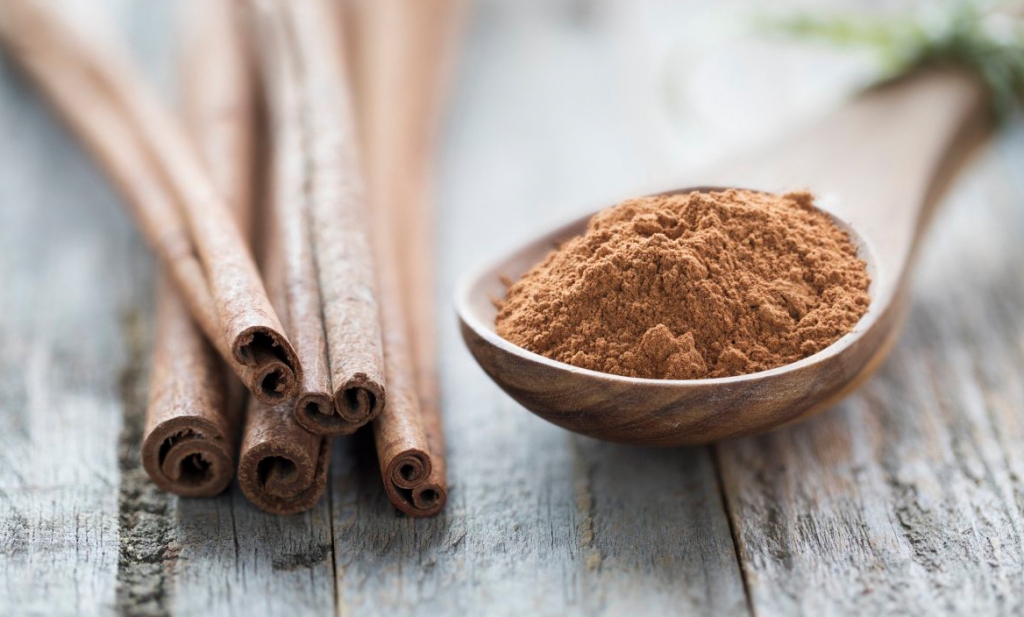 Cinnamon (Cinnamomum verum) Cinnamon has long been a spice that American kitchens have had for decades, even a century or two. Part of the spice trade of medieval times, this spice of precious value, and was one of the earliest spices imported from Sri Lanka. Beyond the cinnamon toast treat I enjoyed as a child, the spice can be found in all sorts of cookies, cakes, and cereals in the United States, but in the Middle East it is highly valued in savory dishes and curries.
Cinnamon (Cinnamomum verum) Cinnamon has long been a spice that American kitchens have had for decades, even a century or two. Part of the spice trade of medieval times, this spice of precious value, and was one of the earliest spices imported from Sri Lanka. Beyond the cinnamon toast treat I enjoyed as a child, the spice can be found in all sorts of cookies, cakes, and cereals in the United States, but in the Middle East it is highly valued in savory dishes and curries.
Cinnamon’s antioxidant properties make it a spice you might want to start using more frequently, especially in your mixtures you make to promote your health. Cinnamon aids the digestive system, increases poor circulation, and is being tested in the treatment of type II diabetes, as it is believed to aid in blood sugar control. It is also often used by connoisseurs of herbal remedies to make other herbs more palatable,as well as add an additional medicinal benefit to the concoction.
Cloves (Syzygium aromaticum) Cloves have a long history in the spice cabinet of the western world and were one of the most highly prized spices of the middle-age spice trade. Cloves are a mainstay used in Indian cuisine and anyone exposed to its flavoring expertly combined with the other tastes of the meal soon find other ways to incorporate cloves into their culinary lives.
Medicinally, the essential oils of cloves and the extractions of it’s nutrients and compounds are a must in your overall health and well being. Applied topically to a tooth, the oil of clove is an analgesic and powerful germicidal that kills bacteria. Cloves can also reduce fever: make a decoction if you have clove buds, or an infusion if you have powdered clove to reduce a fever. Mull the cloves with cinnamon and apple peel to make a tastier tea for those suffering from acute nausea. Cloves are also believed to have antibiotic properties, and the oil can be applied topically to burns, skin rashes, or irritations like acne.
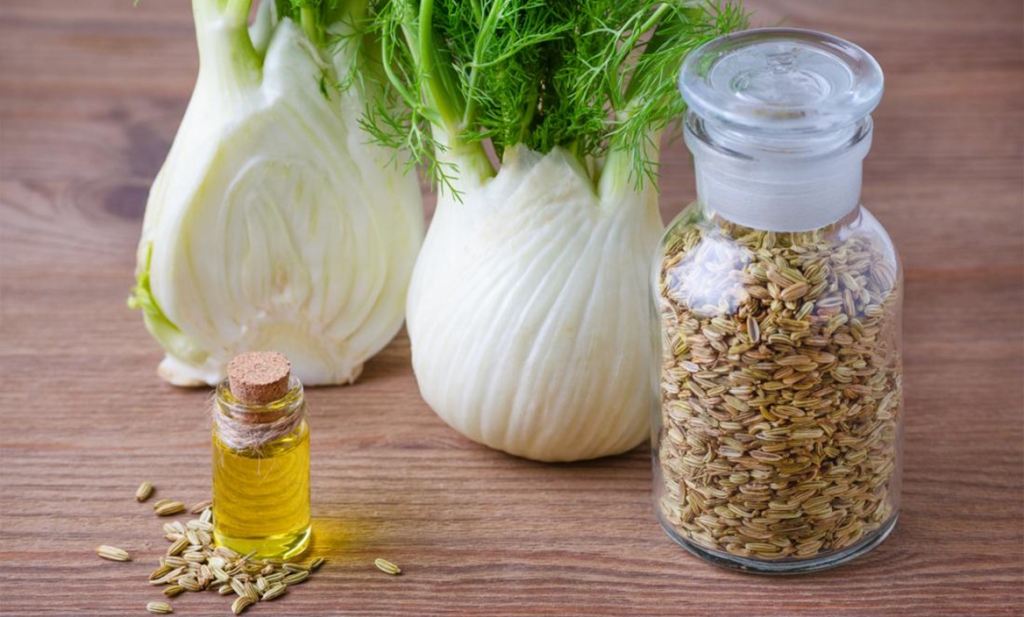 Fennel (Foeniculum vulgare) The fennel root bulb and its seed are predominately used in Italian and Middle-Eastern cooking where it is used to enhance the taste of fish, eggs, breads, and sauces. It gives off the aromatic flavor that dishes from that region are known for.
Fennel (Foeniculum vulgare) The fennel root bulb and its seed are predominately used in Italian and Middle-Eastern cooking where it is used to enhance the taste of fish, eggs, breads, and sauces. It gives off the aromatic flavor that dishes from that region are known for.
On the medical level, fennel is an amazing herb to employ in your medicinal cabinet. Fennel has carminative properties (reduces gas and flatulence) and is often used when purgatives are needed to ease the side effects of purging i.e. nausea, vomiting and diarrhea. A wonderful digestive aid, fennel seeds can be used to make an infusion you can drink after a meal to help digest a food that might cause intestinal discomfort. Several uses can be available when you employ fennel, and the many benefits experienced can help your overall health.
Garlic (Allium sativum) Garlic is used so widely, all over the world as a culinary herb for its pungent flavor and seasoning versatility that you can hardly find anyone that has not heard of it. You can add fresh or garlic powder to soups, stews, stocks, meat dishes, and the list goes on and on.
Beyond what it can do for your palate in the kitchen, garlic can be an herb of choice for colds, flus, and sore throats. Garlic is a very powerful anti-fungal and has antibiotic properties when properly applied. In the event of a cold or flu, add powdered garlic to your meal or sprinkle on your salad for added flavor and herbal healing.
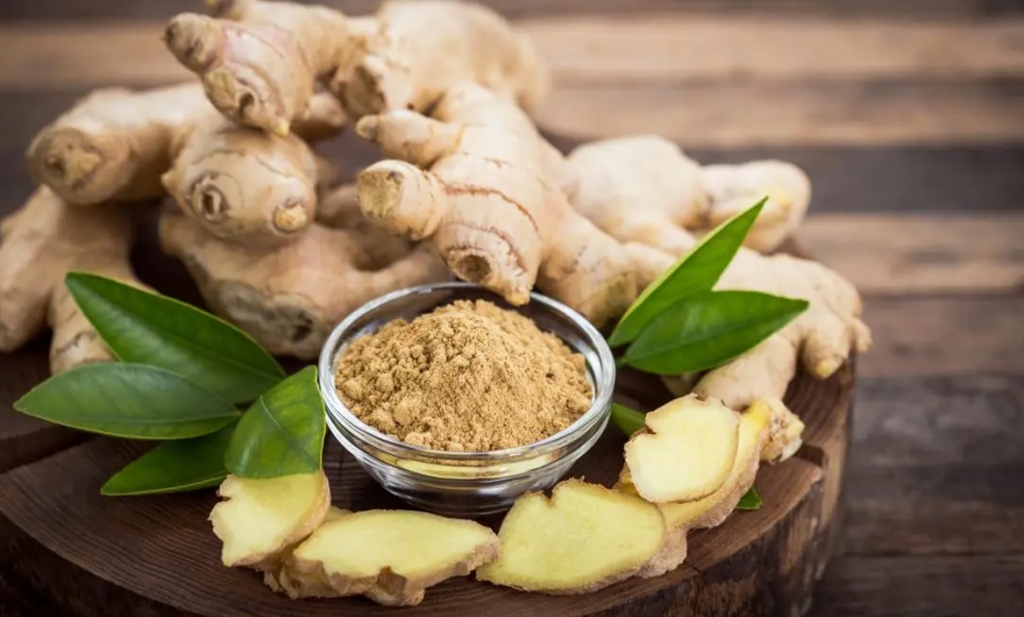 Ginger (Zingiber officinale) Ginger is an ancient Asian spice that can be found in many desserts, curries, candies, seafood dishes, and vegetarian stir-fries. And is one of my favorite and most often used spices in what I cook and juice with. It is a great addition to spice up whatever you are looking to ingest.
Ginger (Zingiber officinale) Ginger is an ancient Asian spice that can be found in many desserts, curries, candies, seafood dishes, and vegetarian stir-fries. And is one of my favorite and most often used spices in what I cook and juice with. It is a great addition to spice up whatever you are looking to ingest.
Ginger is an excellent remedy for morning sickness and motion sickness. Ginger is not only an excellent warming herb but acts as a decongestantin the event of a fever, draw a hot bath and sprinkle a handful of powdered ginger in your water. The bath will induce your body to sweat out impurities, provide warming in the event of chills, and help your congestion break-up. Learn more on how adding ginger to your diet can give your the widespread benefits from what it naturally contains.
Nutmeg (Myristica fragrans)Nutmeg is another spice that has been found in the kitchen of American homes the past few decades. Often used for dishes and drinks around the holiday Christmas season, it has a slightly sweet spicy flavor that is often used in cheese sauces to add a delicate taste, or in brewed drinks like eggnog, and mulled cider.
Nutmeg is very useful as a remedy for nausea, vomiting, and indigestion, and also helpful for diarrhea related to food poisoning. Iin the event of food poisoning, nutmeg can settle the stomach, and help ease the effects of the purging from the body. Sprinkle powder or grating whole nutmeg over plain brown rice to reintroduce solids, and to make a tea for those who are still unable to keep anything down. Be cautious of overuse, it is in this case where too much nutmeg can be a bad thing.
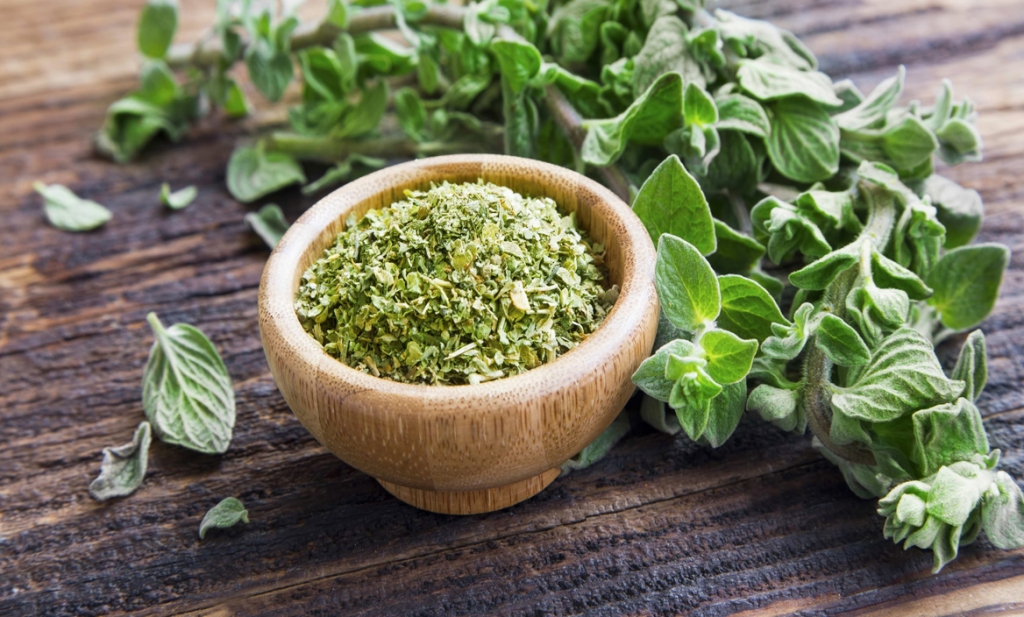 Oregano (Origanum vulgare) Oregano despite being identified as something more hallucinogenic by the inexperienced and ignorant, this spice gives Italian cuisine its distinctive and desired flavor. and a staple on pizza. Often used in its dried state, rather than fresh, to give you that “oompa” you want from the dish.
Oregano (Origanum vulgare) Oregano despite being identified as something more hallucinogenic by the inexperienced and ignorant, this spice gives Italian cuisine its distinctive and desired flavor. and a staple on pizza. Often used in its dried state, rather than fresh, to give you that “oompa” you want from the dish.
Oregano properties can help strengthen the immune system, heal digestive eruptions, and is proven to have antioxidant properties, Hippocrates, the father of medicine, advised using oregano as an antiseptic and for respiratory ailments. It has many ways that it can be used around the home to your body’s benefit.
Peppermint (Mentha × piperita) Species in the Mint family, like Peppermint and Spearmint are easy to come by and grow wildly in many types of climates. Believed to be the world’s oldest medicine, it is often found in teas, candies, chewing gum, and toothpaste. It is a soothing herb that provides a great refreshing sensation to battle things like fatigue. easily incorporated into one’s diet, Peppermint can spruce up an dish or drink you have hunkering for.
It is highly calming to the digestive system and especially good for ulcerative colitis and Crohn’s disease because of its natural calming properties. Peppermint is one of the tastier herbs, and makes a perfect infusion with a little raw honey. In studies conducted in Italy in 2007, peppermint oil was also found to relieve symptoms of Irritable Bowel Syndrome.
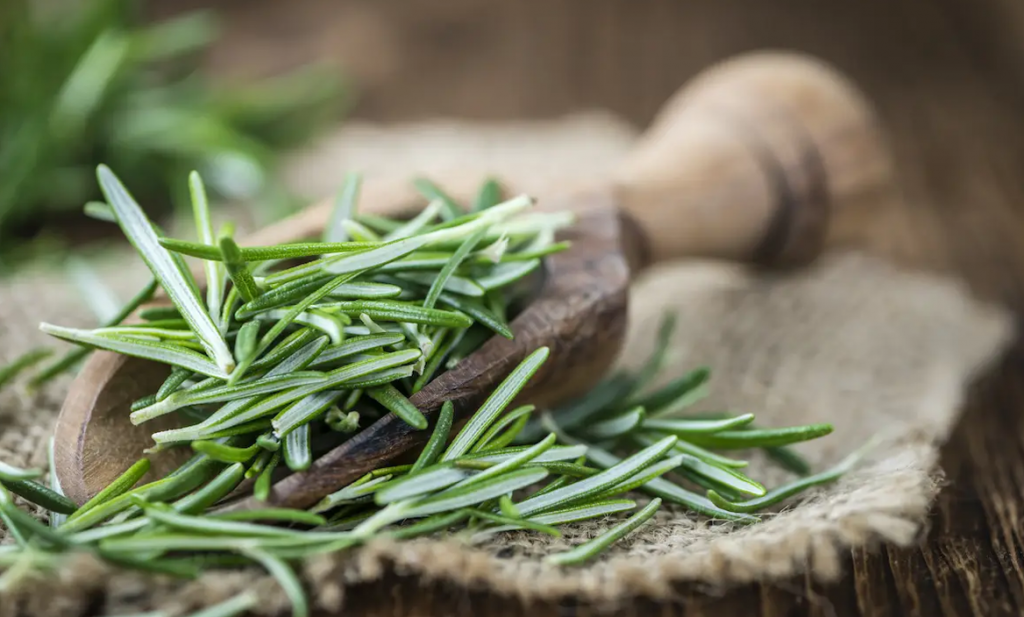 Rosemary (Rosmarinus officinalis) Rosemary has a earthy, woody evergreen smell that complements many dishes originating in the Mediterranean. Rosemary makes an excellent addition to meat gravies, risotto dishes, and soup stocks. Rosemary is high in iron, calcium, and Vitamin B6. It has long been believed to help the mind in retaining information, and mental clarity. Shakespeare is reported to have called it the herb of “remembrance.”
Rosemary (Rosmarinus officinalis) Rosemary has a earthy, woody evergreen smell that complements many dishes originating in the Mediterranean. Rosemary makes an excellent addition to meat gravies, risotto dishes, and soup stocks. Rosemary is high in iron, calcium, and Vitamin B6. It has long been believed to help the mind in retaining information, and mental clarity. Shakespeare is reported to have called it the herb of “remembrance.”
The herb can provide relief for headaches through aromatherapy and ingestion. Rosemary is often used to combat depression and is an excellent all around herb for the mind.
Sage (Salvia officinalis) Sage is one of those herbs often found in the spice rack, but not necessarily understood in the use of it. Found in many traditional European dishes, its slightly peppery flavor and savory leanings make it best when added to meats and cheeses. It isn’t a flavor catalyst like cayenne, nor a picker upper like Peppermint, however it’s distinctive flavor has a grounding effect upon the dishes or individual food types with which you use it..
Sage is believed to have medicinal properties for almost any ailment. You can make an infusion and use it as an astringent. Sage has antibiotic properties and is effective in improving a weak digestive system and cutting excess mucous. Sage tea is an excellent remedy for a chronic winter cough. A cleansing herb, sage can also be used as a tonic for low energy. For lactating mothers, sage is also effective in assisting slowing down the milk supply when weaning a baby from mother’s milk. Sage has a place historically as an herb that is used to cleanse and purify however it is used.
Thyme (Thymus vulgaris) Thyme is a natural source of iron and is found widely in culinary dishes all over the world. It was used by ancient Egyptians in the embalming process, and has long been believed to purify the body and it surrounding environs. In the event of a respiratory infection, you can make an infusion and then let the affected individual bend over the steaming thyme infusion and inhale.
Another herb most flavorful in its dried state, thyme is found in many lamb, tomato, and egg dishes. Its natural expectorant properties make it excellent for throat or bronchial problems. Thyme is a natural antiseptic, and can be used to soothe the throat, and ease the inflammation. Its antibiotic properties makes thyme a well favored herb in a first-aid scenario. Use the thyme to coat bandages, and it is believed to have anti-fungal properties that assist in healing of foot type afflictions, i.e. athlete’s foot,toenail fungus, etc.
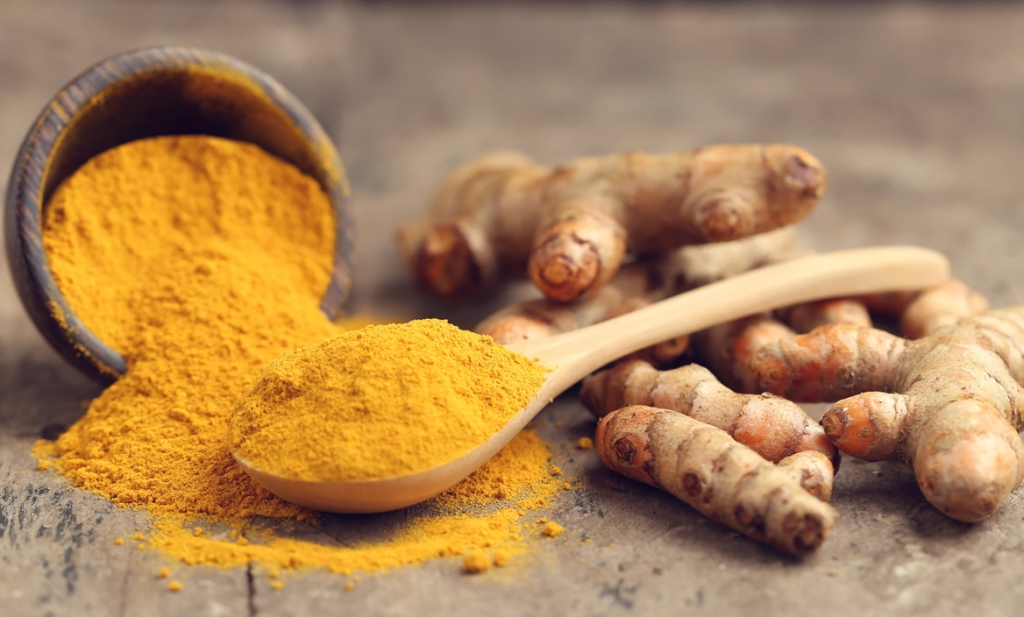 Turmeric (Curcuma longa) Volumes have been written about the many health benefits of turmeric,and should be considered one of the mainstays in your Apothecary cupboard. Turmeric is useful for indigestion, gas, ulcerations of the digestive tract, and gall stones. It possesses potent anti-inflammatory compounds and is useful for chronic joint pain. Used regularly this pungent spice can help you stay healthy warding off conditions like cardiovascular disease, dementia, and cancer. Use turmeric liberally in your diet, at least one tablespoon per day. Actions: Anti-inflammatory, digestive aid and liver stimulant, hypolipidemic, hypotensive, anticoagulant, anti-mutagenic, antioxidant.
Turmeric (Curcuma longa) Volumes have been written about the many health benefits of turmeric,and should be considered one of the mainstays in your Apothecary cupboard. Turmeric is useful for indigestion, gas, ulcerations of the digestive tract, and gall stones. It possesses potent anti-inflammatory compounds and is useful for chronic joint pain. Used regularly this pungent spice can help you stay healthy warding off conditions like cardiovascular disease, dementia, and cancer. Use turmeric liberally in your diet, at least one tablespoon per day. Actions: Anti-inflammatory, digestive aid and liver stimulant, hypolipidemic, hypotensive, anticoagulant, anti-mutagenic, antioxidant.
Overall TakeAway
Culinary herbs can readily enhance our daily cuisine, but they also have medicinal properties that have been all but forgotten. Study and search out what things that we can use daily, in the course of living life that will also do you a solid health wise. Building your own Apothecary kit, with the spice and herb regulars can help you to focus on your overall health care regiment; it’s amazing what a little knowledge can do for boosting one’s confidence in natural herbal healing.
Again take a look at how you can incorporate best these herbal nutrients and compounds by clicking here.

